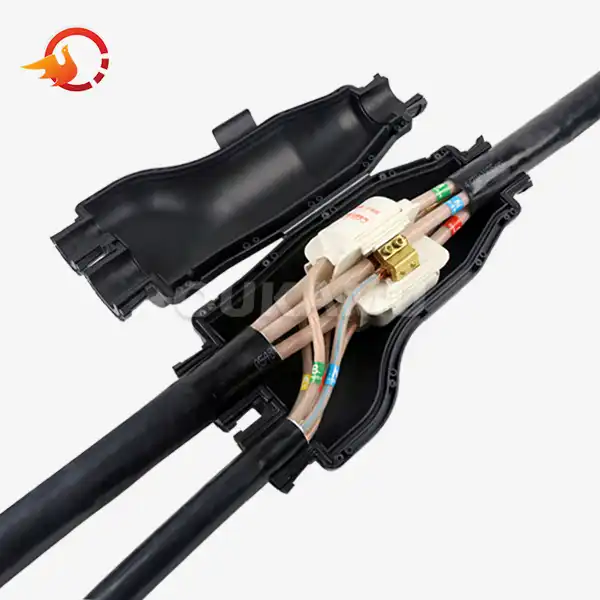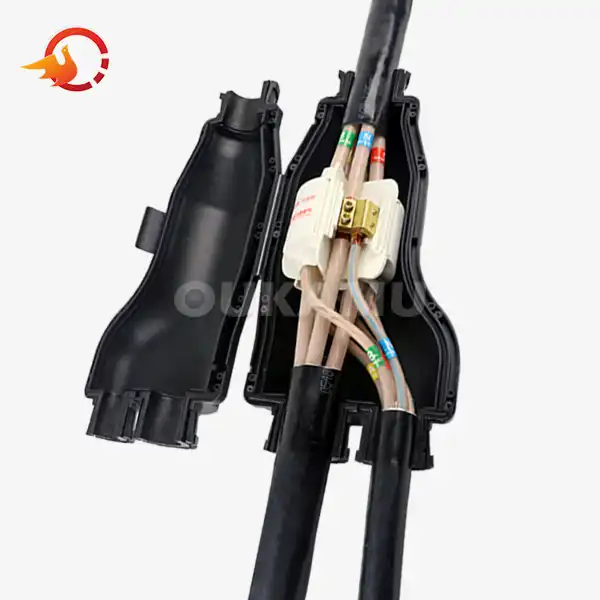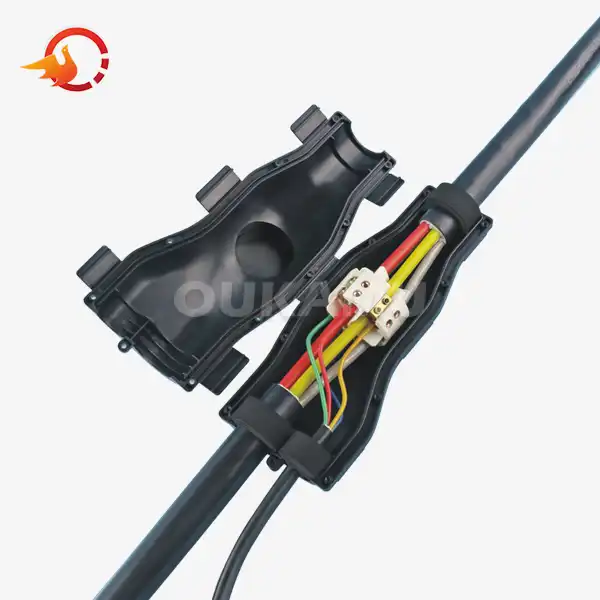Underground Cable Jointing for Low Voltage and Fireproof Cables
 2025-03-31 09:28:20
View:389
2025-03-31 09:28:20
View:389Underground cable jointer is a crucial aspect of electrical infrastructure, particularly when dealing with low voltage and fireproof cables. This process ensures the seamless connection and distribution of power while maintaining safety standards. In this comprehensive guide, we'll explore the intricacies of underground cable jointing, focusing on low voltage and fireproof cables, and discuss the essential techniques and considerations for successful installations.
Comprehending Underground Cable Jointing
Underground cable jointing involves connecting two or more cables beneath the surface, typically in underground vaults or manholes. This process is vital for maintaining electrical continuity and protecting the connection points from environmental factors. When working with low voltage and fireproof cables, specific techniques and materials are employed to ensure safety and reliability.
Low voltage cables, typically operating at less than 1000 volts, are widely used in residential and commercial applications. Fireproof cables, however, are specially designed to sustain circuit integrity during fire conditions. These cables are crucial in buildings where it's essential for evacuation routes and emergency systems to remain functional, even during a fire. Their ability to withstand extreme heat ensures that critical systems continue to operate, providing safety and reliability in emergency situations.
The jointing process for these cables requires specialized knowledge and tools. Technicians must be adept at cable preparation, insulation removal, conductor connection, and proper sealing techniques. The T-GJFZ-16/10 model, for instance, is a specialized branch cable connector suitable for main cables of 4-16mm and branch cables of 1.5-10mm, offering IP68 waterproof protection and gel-filled insulation for double safety.
Techniques and Best Practices for Underground Cable Jointing
Successful underground cable jointer involves several key steps and considerations:
- Cable Preparation: Begin by carefully stripping the outer sheath and internal insulation, ensuring that the conductors remain undamaged. Take your time to avoid any cuts or abrasions that could affect the performance of the cable.
- Conductor Connection: Securely join the conductors using the appropriate methods, such as crimping, soldering, or using mechanical connectors. Make sure the connection is tight and reliable, providing optimal conductivity and preventing any loose connections.
- Insulation Restoration: Once the conductors are securely connected, restore the insulation using suitable materials. This step is crucial for maintaining both the electrical and mechanical properties of the cable, ensuring safety and preventing short circuits.
- Outer Sheath Reconstruction: To protect the joint from moisture and mechanical stress, seal it using heat-shrink tubing or cold-applied tapes. This process helps safeguard the cable from external factors that could lead to damage, ensuring the longevity and reliability of the installation.
- Testing: Finally, perform thorough electrical tests to verify the integrity and performance of the joint. This step is essential to ensure the connection is safe, functional, and meets all necessary standards for electrical performance.
For fireproof cables, additional steps may be necessary to maintain their fire-resistant properties. This might include using specialized fire-resistant tapes or compounds to wrap the joint, ensuring the entire cable system maintains its fire rating.
The T-GJFZ-16/10 model exemplifies modern jointing solutions, offering features like concealed installation in wells or direct buried soil, eliminating the need to cut the main cable or reserve lengths. Such innovations contribute to flexible installation locations and overall cost-effectiveness.
Challenges and Innovations in Underground Cable Jointing
Underground cable jointer presents unique challenges, particularly in urban environments where space is limited and existing infrastructure complicates installations. Innovations in jointing technology are addressing these issues:
- Compact Designs: Modern joint designs, like the integrated T-GJFZ-16/10 structure, offer compact sizes that are ideal for installation in tight spaces. These designs allow for efficient use of space while maintaining optimal performance, making them perfect for areas with limited room for electrical components.
- Enhanced Waterproofing: Advanced sealing techniques, such as gel-filled insulation, provide superior protection against moisture ingress. This added layer of protection ensures the joint remains fully functional even in humid or wet environments, preventing potential electrical failures due to water exposure.
- Fire-Resistant Materials: New developments in fire-resistant compounds have significantly improved the ability of joints to maintain electrical integrity under extreme heat conditions. These materials prevent the degradation of the joint, ensuring it continues to perform safely, even in high-temperature environments where fire risks are present.
- Smart Joints: The integration of sensors into joints allows for real-time monitoring of their performance. These "smart" joints can detect early signs of faults, enabling timely maintenance and minimizing the risk of failure. This technology enhances the overall reliability and efficiency of electrical systems by providing valuable insights into joint health.
The benefits of on-site underground cable jointer are becoming increasingly recognized. This approach offers advantages such as adjustable branch positions, higher coiling efficiency, and adaptability to complex topologies. It also allows for real-time adjustments based on site conditions, simplifies the threading process, and reduces inventory pressures.
For instance, the ability to install trunk and branch cables separately can significantly reduce waste and improve efficiency in complex laying scenarios. This flexibility is particularly valuable in projects where design changes are common or where environmental conditions are challenging.
Conclusion
In conclusion, underground cable jointer for low voltage and fireproof cables is a critical skill in modern electrical infrastructure. As technology advances, new tools and techniques continue to emerge, improving the efficiency, reliability, and safety of these vital connections. For those seeking expertise in this field, staying updated with the latest innovations and best practices is essential. For more information about cable connection products and innovative solutions like the T-GJFZ-16/10 model, please contact us at info@okmbranchcable.com.
References
1. Smith, J. (2022). "Advanced Techniques in Underground Cable Jointing". Electrical Engineering Quarterly, 45(3), 78-92.
2. Johnson, M., & Brown, L. (2021). "Fire-Resistant Cable Jointing: Challenges and Solutions". Journal of Fire Protection Engineering, 32(2), 201-215.
3. Zhang, Y. et al. (2023). "Innovations in Waterproof Cable Joints for Underground Applications". IEEE Transactions on Power Delivery, 38(4), 1856-1867.
4. Thompson, R. (2020). "Cost-Effective Strategies for Urban Underground Cable Installations". Urban Infrastructure Review, 15(1), 45-58.
5. Garcia, A., & Lee, S. (2022). "Smart Monitoring Systems for Underground Cable Joints". International Journal of Electrical Power & Energy Systems, 140, 107958.















